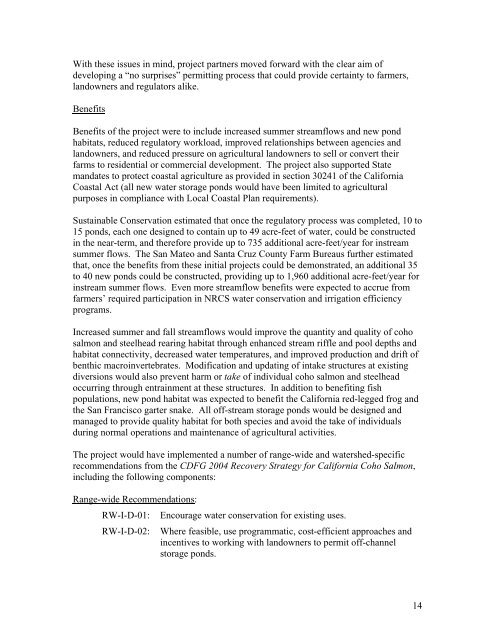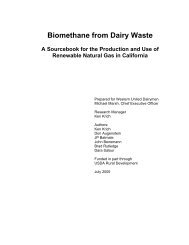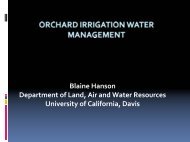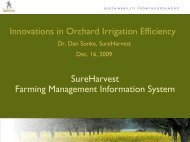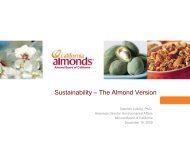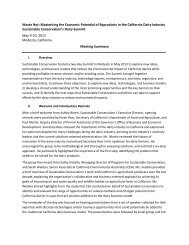THE PONDS PROJECT - Sustainable Conservation
THE PONDS PROJECT - Sustainable Conservation
THE PONDS PROJECT - Sustainable Conservation
Create successful ePaper yourself
Turn your PDF publications into a flip-book with our unique Google optimized e-Paper software.
With these issues in mind, project partners moved forward with the clear aim of<br />
developing a “no surprises” permitting process that could provide certainty to farmers,<br />
landowners and regulators alike.<br />
Benefits<br />
Benefits of the project were to include increased summer streamflows and new pond<br />
habitats, reduced regulatory workload, improved relationships between agencies and<br />
landowners, and reduced pressure on agricultural landowners to sell or convert their<br />
farms to residential or commercial development. The project also supported State<br />
mandates to protect coastal agriculture as provided in section 30241 of the California<br />
Coastal Act (all new water storage ponds would have been limited to agricultural<br />
purposes in compliance with Local Coastal Plan requirements).<br />
<strong>Sustainable</strong> <strong>Conservation</strong> estimated that once the regulatory process was completed, 10 to<br />
15 ponds, each one designed to contain up to 49 acre-feet of water, could be constructed<br />
in the near-term, and therefore provide up to 735 additional acre-feet/year for instream<br />
summer flows. The San Mateo and Santa Cruz County Farm Bureaus further estimated<br />
that, once the benefits from these initial projects could be demonstrated, an additional 35<br />
to 40 new ponds could be constructed, providing up to 1,960 additional acre-feet/year for<br />
instream summer flows. Even more streamflow benefits were expected to accrue from<br />
farmers’ required participation in NRCS water conservation and irrigation efficiency<br />
programs.<br />
Increased summer and fall streamflows would improve the quantity and quality of coho<br />
salmon and steelhead rearing habitat through enhanced stream riffle and pool depths and<br />
habitat connectivity, decreased water temperatures, and improved production and drift of<br />
benthic macroinvertebrates. Modification and updating of intake structures at existing<br />
diversions would also prevent harm or take of individual coho salmon and steelhead<br />
occurring through entrainment at these structures. In addition to benefiting fish<br />
populations, new pond habitat was expected to benefit the California red-legged frog and<br />
the San Francisco garter snake. All off-stream storage ponds would be designed and<br />
managed to provide quality habitat for both species and avoid the take of individuals<br />
during normal operations and maintenance of agricultural activities.<br />
The project would have implemented a number of range-wide and watershed-specific<br />
recommendations from the CDFG 2004 Recovery Strategy for California Coho Salmon,<br />
including the following components:<br />
Range-wide Recommendations:<br />
RW-I-D-01: Encourage water conservation for existing uses.<br />
RW-I-D-02: Where feasible, use programmatic, cost-efficient approaches and<br />
incentives to working with landowners to permit off-channel<br />
storage ponds.<br />
14


